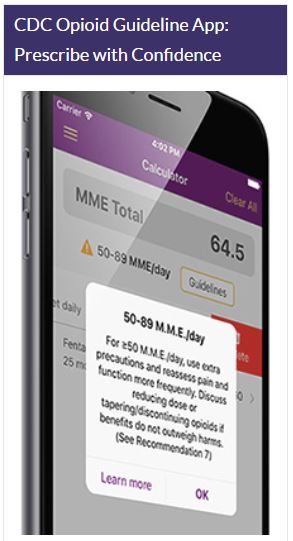In 2017, more than 6 million opioid prescriptions were dispensed to Indiana residents. Improving the way opioids are prescribed through clinical practice guidelines can ensure patients have access to safer, more effective pain treatment, while reducing the number of people who misuse, abuse or overdose from these drugs. The following guidelines have been developed and published by experts in the field of pain management to guide clinicians on best practices when it comes to prescribing opioids. Each guideline is tailored to a specified clinical setting.
Emergency Department
Indiana Guidelines for Opioid Prescribing in the Emergency Department
These guidelines provide emergency departments in Indiana a general approach to prescribing opioids for acute conditions. Included with the guidelines is a “Facility Action Checklist” that enables hospitals to review and compare their current practices and align them with the recommended guidelines.
Chronic Pain
Indiana Pain Management Prescribing Final Rule
In 2014, the Indiana Medical Licensing Board adopted a final rule that regulates physicians engaged in the practice of pain management prescribing, pursuant to Indiana Administrative Code 844 IAC 5-6. These regulations address the main factors of safe and effective prescribing practices that include: patient assessment, non-opioid treatment options, patient information consent, patient follow-ups, INSPECT reports, drug monitoring tests, a daily high dose threshold and a treatment agreement.
CDC Guidelines for Prescribing Opioids for Chronic Pain
The CDC’s guidelines for prescribing opioids intends to increase communication between providers and patients about the risks of opioid treatment for chronic pain, improve the safety and effectiveness of long-term opioid treatment and re-emphasize follow-ups to evaluate benefits and harms of continued therapy. These guidelines apply to primary care providers treating adults with chronic pain for more than three months, excluding cancer, palliative and end-of-life care. For a more detailed description of CDC’s guidelines, click here.
CDC Videos
The CDC has created an interactive online training series aimed to help healthcare providers apply CDC’s recommendations in clinical settings through patient scenarios, videos, knowledge checks, tips and resources. Providers can gain a better understanding of the recommendations, the risks and benefits of prescription opioids, non-opioid treatment options, patient communication and risk mitigation. Each standalone module is self-paced and offers free continuing education credit (CME, CNE, and CEU). Visit the CDC website for more information.
CDC Mobile App
The CDC has created an opioid guideline mobile app designed to help providers apply the recommendations of CDC’s Guideline for Prescribing Opioids for Chronic Pain into clinical practice by putting the entire guideline, tools and resources in the palm of their hand. The application includes a morphine milligram equivalent calculator, summaries of key recommendations, a link to the full guideline and an interactive motivational interviewing feature to help providers practice effective communications skills and prescribe with confidence. Visit the CDC website for more information.
Additional Resources:
- CDC's Guideline Resources: Clinical Tools
- Jama Special Communication regarding CDC Guidelines for Prescribing Opioids for Chronic Pain
Comparison of CDC Guidelines to Indiana Prescribing Rule
The variety of guidelines published by various institutions can often be difficult to compare and contrast. In response to this, the Indiana State Medical Association has compiled a document that compares CDC’s Guidelines for Prescribing Opioids for Chronic Pain with Indiana’s Pain Management Prescribing Final Rule. Although both sets of guidelines are aimed at improving the safety and effectiveness of opioid prescribing practices, the Indiana requirements are tailored more to the state of Indiana, while the CDC’s recommendations apply nationally. Physicians in Indiana may still apply the CDC’s recommendations in their opioid prescribing practices, even if those guidelines are not addressed in Indiana’s requirements.
Acute Pain
The Indiana Guidelines for the Management of Acute Pain
The Indiana Guidelines for the Management of Acute Pain guidelines address safe, appropriate and effective opioid prescribing practices for outpatient management of acute pain. They may be applied to patients of all ages presenting acute pain, but they may not apply to acute pain resulting from a chronic condition.
Additional Resources
Co-prescribing Naloxone to Patients at Risk of Overdose
Co-prescribing naloxone is encouraged by a broad range of stakeholders to help reverse the effects of an opioid overdose for high-risk patients. This resource provided by the American Medical Association (AMA) describes how to determine when it is clinically appropriate to co-prescribe naloxone and provides additional considerations, such as how to approach a patient you wish to co-prescribe naloxone to.

